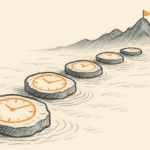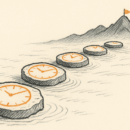Why do we still tolerate bullies in our organizations?

We all know about bullies at school. They seemed to be ever-present when we were being educated. The kids who were bigger and more aggressive than others, who then intimidated and tormented their smaller and milder-mannered schoolmates.
Bullying was rampant when I was in school, and it led to some severe issues in those unfortunate kids who were targeted for abuse and mockery. Some still carry the scars of those formative experiences.
Schools and teachers are a little more enlightened these days, and most make a concerted attempt to reduce the amount of bullying that occurs. Newer generations of schoolkids are not exposed to the primitive levels of oppression that their parents were. Bullies are, these days, reported to the school authorities more frequently, and in many cases they are punished or educated about the effects of their behaviour.
So why do we still allow bullying to continue in the workplace?
It seems many of the bullies of the schoolyard graduated to becoming the bullies of the office. Weirdly, we often allow them to ascend to positions of leadership. There they are, on factory floors, in executive suites, on plantations, even in boardrooms. What happens when you give a bully power over others? They intimidate and browbeat; they gaslight and manipulate; they block and harass.
Why should this be OK?
That we permit this, or look away when we know it’s happening, is a hangover from a more archaic era. Once upon a time, many regarded workers as lazy, untrustworthy creatures. If they were not kept in line, it was thought, they would not do their work, and they would cheat and defraud the company at every turn. So they needed a firm hand and a tough boss to maintain discipline and order. Humans were mere resources in this scheme; employment contracts were mere transactions; and bosses were enforcers, not enablers.
Of course the bullies thrived.
But that was then. Enlightenment has dawned, albeit slowly. We do not get the best out of people by whipping them into shape; we get their best by engaging them with a common mission. We get better performance by civilizing our workplaces, for a very simple reason: the human performs better when involved, included, and appreciated.
Some disappointments are inevitable; some employees will indeed let us down. But that is not a reason to impose despotic bosses.
And yet, they still walk amongst us. Supervisors who regard every subordinate as a potential thief to be surveilled. Managers who see young recruits as sexual targets. Directors whose mantra is hit your numbers or get out. Boards who perpetuate the culture of hire and fire freely. Owners who only see vassals to be exploited, not willing participants in the path to mutual prosperity.
If you run an organization, take a look at the weakest units in the enterprise: the departments with performance that doesn’t last beyond a year or two; the divisions with high staff turnover; the micro-cultures where negativity and pessimism dominate. Look at the leader of those teams, and I suspect you may find a common culprit: the bully boss.
In her book, The Greats on Leadership, Jocelyn Davis calls this the “master and slave” problem, referencing German philosopher Hegel: “The more a master treads down his slaves, asserting dominance over them and seeking to control what they do, the more weak, indecisive, and unimpressive they become, until finally, the master is nothing more than a master of slaves.”
Ms Davis points out that the bully boss, unable to trust employees, and unable to contemplate being outshined by them, will actually slowly kill the team: “…squelch its talent, wreck its harmony, and undermine its plans.” Over time, bully bosses lead the most dysfunctional teams. Do you really want to appoint and promote them? If so, the root of the problem probably resides in you.
As I have written repeatedly, leadership is misunderstood to be the act of getting work out of others. It is actually the ability to get work done through and with others. It is about creating the conditions in which others can give of their best. What are those conditions? They are simplicity itself. Let people feel psychologically safe and fairly treated under your leadership; connect them to a cause bigger than themselves; cultivate a sense of community and togetherness in the collective; and study and understand each person as an individual with special talents.
I am sometimes told this is a naive viewpoint, that humans are work-shy tricksters by nature, that being soft on them is a recipe for disaster. Well, you are free to hold that perspective and to act on it. Do please run your organization like the plantations and factory floors of yore, as though enlightenment about the human at work never arrived. When this approach returns sustained success over more than a few years, I’ll be happy to come and take notes.
Meanwhile, I’m beating my own drum. Look out for the bullies embedded in your organization. They are retarding you and keeping you primitive and crude.
(Sunday Nation, 19 March 2023)

Buy Sunny Bindra's new book
The X in CX
here »
Popular Posts
- Where are you rushing to—your funeral?June 29, 2025
- The map will appear—once you start walking.July 6, 2025
- Built the app, forgot the flowJune 22, 2025
- How to spot a real thinkerJune 15, 2025















